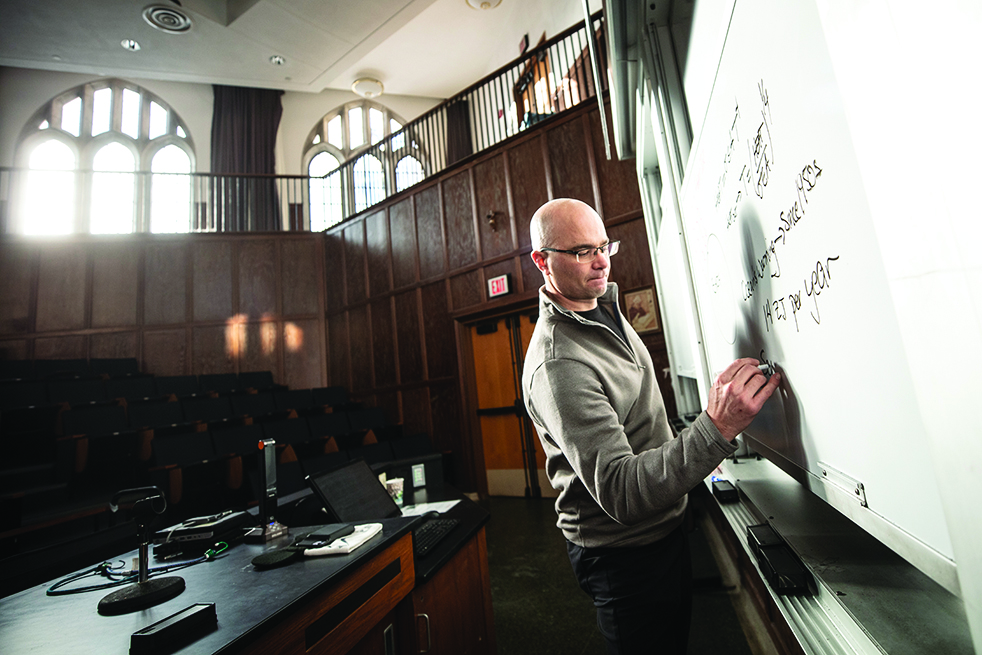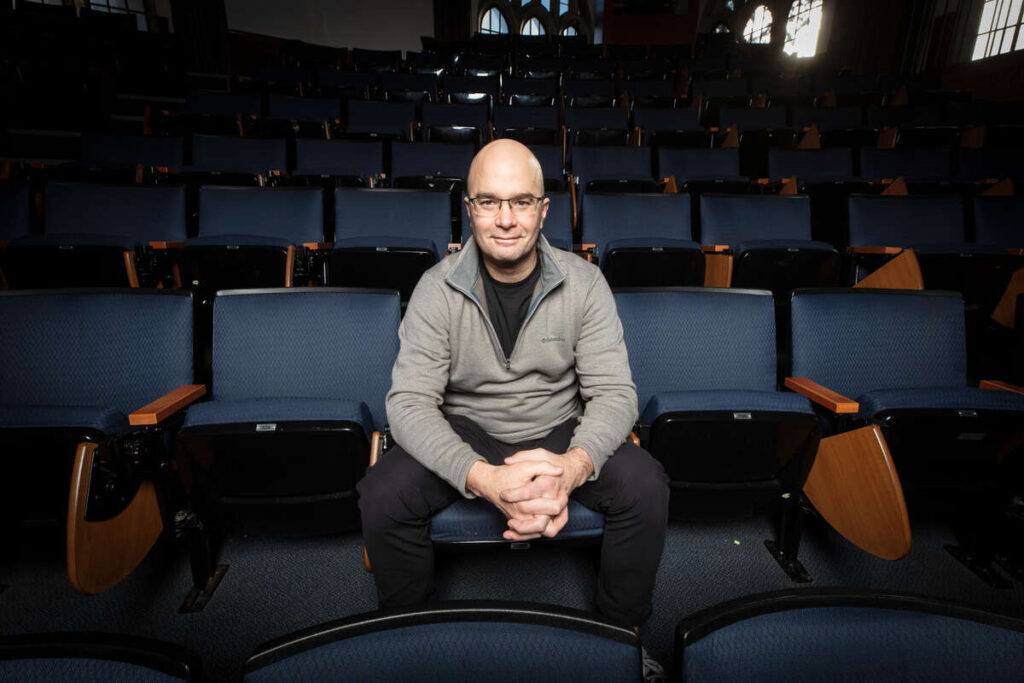The University of St. Thomas today was named the 2011-2012 Individual Conference Champion by the U.S. Environmental Protection Agency in its College and University Green Power Challenge.
The honor is given to the Minnesota Intercollegiate Athletic Conference college or university that uses more green power than any other school in the conference.
Green power is electricity that is generated from environmentally preferable resources, such as wind, solar, geothermal, bio gas, biomass or low-impact hydro. Purchases of green power support the development of new renewable energy capacity nationwide and help to reduce gas emissions from the power sector.
St. Thomas beat its competitors − Augsburg College and Carleton College − by using more than 14 million kilowatt-hours of green power, representing 43 percent of the school’s annual electricity usage. The university purchases Windsource, a utility green power product from Xcel Energy, which helps to reduce the environmental impact associated with its campus’ electricity use.
The EPA notes that St. Thomas’ 14 million kwh green-power usage is equivalent to avoiding the carbon dioxide emissions from the electricity used by more than 1,000 average American homes annually.
In 2008 Father Dennis Dease, president of St. Thomas, signed the American College and University Presidents’ Climate Commitment. The commitment acknowledges the university’s agreement with “the scientific consensus that global warming is real and is largely being caused by humans” and further recognizes “the need to reduce the global emission of greenhouse gases by 80 percent by mid-century at the latest, in order to avert the worst impacts of global warming and to re-establish the more stable climatic conditions that have made human progress over the last 10,000 years possible.”
In the four years since Dease signed the commitment, the university community has undertaken a wide range of campus sustainability projects.
Most notably, a Climate Action Plan for St. Thomas was drafted in 2010, which underscored the university’s commitment to make the campus carbon neutral by 2035 by reducing emissions by 2,410 tons per year for 25 years. The plan also pledged to make campus sustainability a part of the educational experience of all students.
Other actions included:
- In 2009, off-campus wind turbines generated 27.3 percent of the university’s electricity – this is enough wind energy to power all of the north campus residence halls. St. Thomas became a certified EPA Green Power Partner because of its Windsource purchases.
- IRT continues to use computers and printers from Dell and HP, companies rated numbers 1 and 2 for their efforts in environmental conservation. Dell desktops and laptops consumed 25 percent less energy in the last fiscal year.
- In February 2010, the university became a sponsor site for two HourCars – vehicles from the Neighborhood Energy Connection’s car-sharing program. The cars are Toyota Prius hybrids, so any mileage accrued will be more fuel-efficient than other vehicles.
- In February 2010, Xcel Energy recognized St. Thomas with an award for the largest gas savings by a commercial customer in 2009. These savings are largely due to energy saving improvements in operations completed by the Physical Plant.
- The new Anderson Athletic Complex incorporates a number of energy-saving features that are in keeping with LEED standards. LEED, which stands for Leadership in Energy and Environmental Design, is a green-building certification system. The complex is under consideration for LEED silver certification, approval pending.
- Every unit at the university is involved: from IRT to Food Service to Physical Plant, all have contracts with vendors who have good records in helping to conserve and preserve energy.
- In February 2010, solar panels were installed on the roof of Brady Hall using funds from a student grant.
The challenge is sponsored by the EPA’s Green Power Partnership, a voluntary program that encourages organizations to buy green power as a way to reduce the environmental impacts associated with purchased electricity use. Partners include Fortune 500® companies, small- and medium-sized businesses, local, state and federal governments, and colleges and universities.
Thirty collegiate conferences and 73 schools competed in the 2011-2012 challenge, collectively purchasing more than 1.8 billion kwh of green power.






